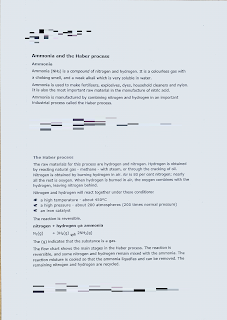"You will need to make some notes on this part of reaction rate science.
This is a guide to the information you will need to include."
Atom economy
The atom economy of a chemical reaction is a measure of the amount of starting materials that become useful products. Inefficient, wasteful processes have low atom economies. Efficient processes have high atom economies, and are important for sustainable development, as they use fewer natural resources and create less waste.
The atom economy of a reaction can be calculated:
Note that, because the total mass of products equals the total mass of reactants, you can put that into the bottom of the fraction in the calculation like this:
For example, what is the atom economy for making hydrogen by reacting coal with steam?
Write the balanced equation:
C(s) + 2H2O(g) → CO2(g) + 2H2(g)
Write out the Ar and Mr values underneath:
C(s) + 2H2O(g) → CO2(g) + 2H2(g)
12 2 × 18 44 2 × 2
Remember that the Ar or Mr in grams is one mole, so:
total mass of products = 44 + 4 = 48g (note that this is the same as the reactants: 12 + 36 = 48g)
mass of desired product (H2) = 4g
% atom economy = 4⁄48 × 100 = 8.3%
This process has a low atom economy and is therefore an inefficient way to make hydrogen. It also uses a non-renewable resource: coal.
Percentage yield
In practice, it is not always possible to get the calculated amount of product in a reaction:
reversible reactions may not go to completion
some product may be lost when it is removed from the reaction mixture
some of the reactants may react in an unexpected way
The yield of a reaction is the actual mass of product obtained. The percentage yield can be calculated:
For example, the maximum theoretical mass of product in a certain reaction is 20g, but only 15g is actually obtained.
percentage yield = 15⁄20 × 100 = 75%
The maximum theoretical mass of product itself can be calculated using a reacting mass calculation





















